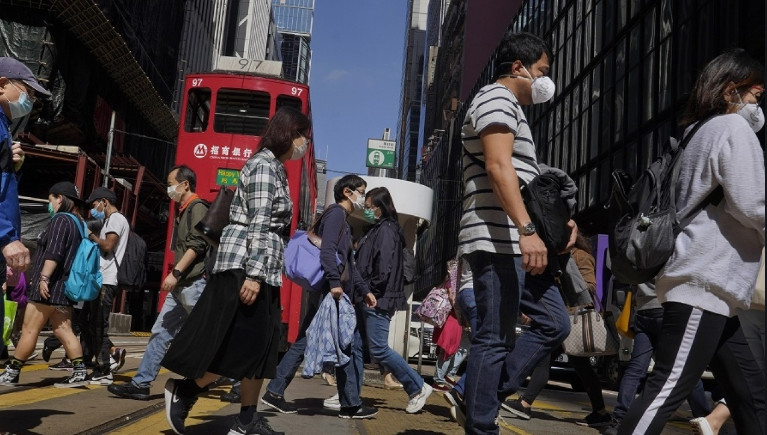Using technology to help reduce traffic accident

A group of university students applied what they have learnt and analysed their selected issues with geographic information system (GlS), and sought solutions. They participated in this year’s Esri Young Scholars Award competition. When you look at their award-winning works, you will admire their broad vision, care for society and creative thinking.
The three students, the champion, 1st runner-up and 2nd runner-up adopted diverse topics: finding the most dangerous road sections to help reduce traffic accident; suggesting the best locations for increasing columbaria; and exploring how to promote local eco-tourism. I appreciated the determination of the students in helping the societyto solve various problems.
Every year, the champion can win sponsored air tickets, board and lodging, and participate in the annual Esri User Conference in San Diego of the United States. This year, however, due to the COVID-19 epidemic, the trip will be postponed to next year together with the next champion. Like the previous year, the champion, 1st and 2nd runner-ups will also have the precious opportunity of summer internship provided by the Urban Renewal Authority.
The champion of Esri Young Scholars Award, Tsoi Ka Ho Jason, is a student from the Department of Geography of the Faculty of Social Sciences at the University of Hong Kong. Taking reference to the Swedish Government's 1997 Vision Zero, he hoped to reduce traffic accidents in Hong Kong. During the process, he discovered the insufficiency of using Junction Blacksites ("blacksites") as the focus of prevention by the Transport Department (TD). The definition of "blacksites" used by the TD is either (i) there are six or more pedestrian injury accidents in the past one year; or (ii) there are nine or more injury accidents in the past one year. The locations are concentrated in the urban area of Kowloon, and a few are within Tsuen Wan, Yuen Long and Sha Tin.
In 2018, there were nearly 16,000 traffic accidents in Hong Kong. Since 2000, the number of accidents has been fluctuating within a narrow range. The number of serious casualties has dropped significantly during this period, but the number of minor injuries has increased by more than 18%. Among them, driver injuries accounted for 25% in 2010, but increased to 34% in 2018.
Jason pointed out that the locations on the "blacksites" may be the result of a series of events. He wanted to find the sections of road with inherent problems to make the road improvement measures more effective.
He classified two or more connected road sections where at least three accidents occurred with the past few years as dangerous "hotzones" and analyzed them with GlS software ArcGIS. Within 30 seconds, the software organized the data of 15,000 accidents of the year which were distributed on 4,000 km of roads.
Taking 2017 as an example, the analysis shows that:
▪ 228 hotzones were found, with a total length of 61.8 kilometers and an average of 13 crashes each hotzone;
▪ The highest crash density is 17.5 crashes per km. This is located at Tai Mei Tuk Road;
▪ There are more accidents within the area where elderly people are concentrated.
There are 14 most dangerous road sections with at least six accidents within 100 meters in Hong Kong. They are widely distributed on King's Road, Kwun Tong Road (near Choi Hung and Kwun Tong MTR station respectively), Pui Ching Road near Ho Man Tin, Fanling Highway and Ting Kok Road. Many of them are not on the TD’s blacksites list. There are different problems on various road sections, such as people and vehicles competing for roads, intersections are too close to each other, and some have problems of over-speeding vehicles. The authority should carry out improvement according to the actual situation.
From this research, I understand that we can really use advanced technology to improve our quality of living. Daring to use innovative thinking can bring breakthrough to the society.
-- Contact us at [email protected]
-

Integration of GIS and BIM can drive development of smart city Dr. Winnie Tang
The China Association for Geospatial Industry and Sciences (“the CAGIS”) released the Top Ten Highlights of China's Geographic Information Industry in 2023, which provides much inspiration. The
-

Equip young people for the future Dr. Winnie Tang
In late February, the inaugural flight of an air taxi from Shenzhen Shekou Cruise Homeport to Zhuhai Jiuzhou Port took only 20 minutes with an estimated one-way ticket price of 200 to 300 yuan per
-

Are we raising a generation of leaders, or of followers? Brian YS Wong
The essence of education is defined not by the facts it imparts, but the potential knowledge it inspires students to individually pursue on their own. Put it this way – the ideal form of education
-

The urgent need for reforms to sex education in Hong Kong Sharon Chau
Nearly one in every four university students (23%) in Hong Kong has been sexually harassed, according to a 2019 report published by the Equal Opportunities Commission (EOC). A 2019 study found that
-

STEAM should be linked to real life Dr. Winnie Tang
In the 2017 Policy Address, STEM (science, technology, engineering and mathematics) education was proposed as one of the eight major directions to promote I&T development. Since then, funding has















